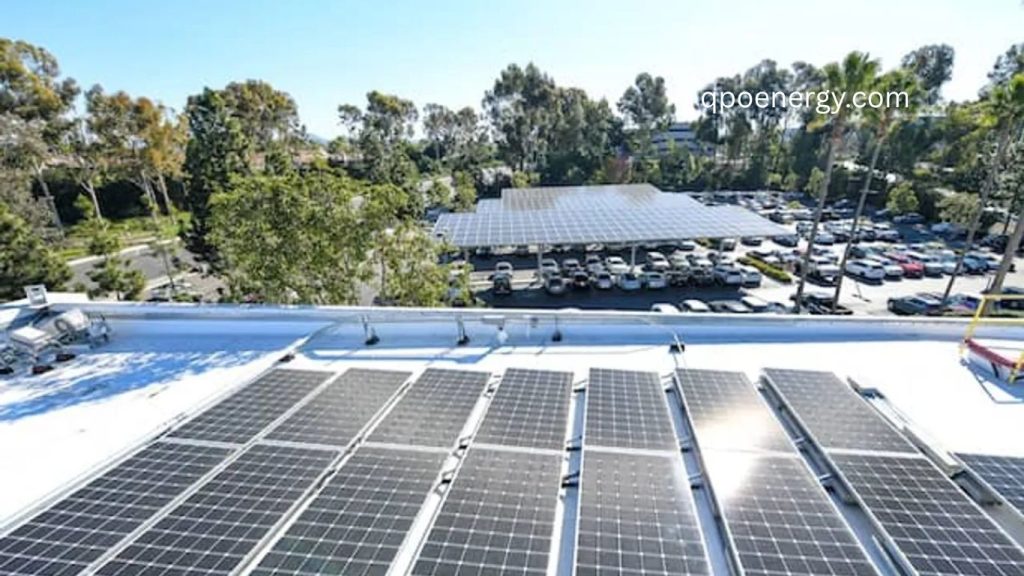Tripura, a picturesque state in India’s Northeast, remains home to numerous tribal and non-tribal settlements where access to electricity is still a challenge. Geographic isolation and low population density have historically hindered the spread of reliable power infrastructure. To tackle this issue, the state government has launched an ambitious initiative to connect 9,250 remote homes with solar microgrids, promising a sustainable solution to energy poverty.
These solar microgrids will be tailored to each community’s needs, with installed capacities ranging from 2 kW to 25 kW depending on the number of households in a settlement. Beneficiaries are expected to pay a nominal fee for electricity consumption, though the final tariff structure is still under review. The project is slated to begin within the current fiscal year, aiming to provide reliable, green energy to previously underserved areas.
Read More: Groundbreaking Remote Solar Array Brings Clean Power to EV Charger 1,600 Kilometres North of Perth
Tripura’s Solar Potential and Vision
Tripura Renewable Energy Development Agency (TREDA) reports that the state has the potential to generate up to 2,000 MW of solar power but is currently producing only 19.5 MW. Recognizing this gap, the state recently unveiled its “Tripura Energy Vision,” with a target to generate 500 MW of solar power by 2030. This ambitious plan signals a major shift toward sustainable energy, aligning with India’s broader renewable energy goals.
In line with this vision, the government has approved the development of a 130 MW floating solar power plant on Doombur Lake in Gomti district. The Tripura Renewable Energy Development Corporation (TREDCO) has partnered with NTPC for a feasibility study, and the plant is expected to generate approximately 200 MW of solar power by 2030. Such initiatives reflect a growing commitment to integrating large-scale and decentralized solar projects across the state.
Challenges in the Northeast
While India has witnessed a remarkable three-fold increase in renewable energy capacity over the past eight years, the Northeastern states continue to face unique challenges. States like Tripura, Mizoram, Assam, and Arunachal Pradesh have achieved power surplus status, yet deploying solar projects remains complex due to terrain, dispersed populations, and climatic constraints.
For instance, in Meghalaya, only 61% of households have access to electricity. Rough terrain, scattered villages, and difficult-to-reach locations make infrastructure development expensive and logistically challenging. Solar irradiation levels and wind availability also vary significantly, affecting project feasibility. In comparison, Western Indian states such as Rajasthan and Gujarat benefit from higher solar potential, producing 25-40% more electricity.
Moreover, the region’s electricity demand pattern poses another obstacle. Peak consumption often occurs during late evening hours when solar generation is minimal, necessitating energy storage solutions to ensure continuous supply. This makes microgrid projects more complex and increases costs, as they must incorporate battery storage or hybrid systems to serve remote households effectively.
Decentralized Solutions Offer Promise
Despite these hurdles, the Northeast holds immense renewable energy potential. The Ministry of New and Renewable Energy (MNRE) estimates that the region has an untapped capacity of 129 GW from renewable sources. Currently, utilization is low, with solar power adoption trailing far behind potential. Recognizing this, governments are advocating decentralized deployment of solar projects, particularly microgrids in hard-to-reach villages.
Solar microgrids offer multiple benefits beyond electrification. They enhance community resilience, reduce reliance on expensive imported electricity, and support local economic development. By distributing power generation, microgrids can minimize transmission losses, stabilize supply, and empower communities to manage their energy resources. This approach aligns with global trends emphasizing distributed renewable energy systems, especially in regions with challenging geography.
The Economic and Social Impact
Connecting 9,250 households with solar microgrids will have a transformative effect on Tripura’s remote communities. Access to electricity enables better educational opportunities through lighting and digital tools, improves healthcare delivery by powering clinics and refrigeration for vaccines, and promotes small-scale entrepreneurship. Families can save money previously spent on kerosene, candles, or diesel generators, while reducing their carbon footprint.
Additionally, this project will create local employment opportunities during installation, maintenance, and operations of solar systems. By training residents to manage and repair microgrids, the state ensures long-term sustainability and builds technical capacity within communities. These initiatives foster social empowerment and enhance local governance, as communities gain more control over their energy supply.
Government Initiatives and Policy Support
Tripura’s commitment to renewable energy is evident in its policy initiatives and collaborations. The state has partnered with central agencies, private developers, and research institutions to identify feasible solar sites and optimize technology deployment. Floating solar projects like the one at Doombur Lake exemplify innovative approaches to land-constrained energy generation, while decentralized microgrids address the challenge of isolated settlements.
The state’s Energy Vision 2030 emphasizes scaling solar generation, improving energy efficiency, and creating a sustainable energy ecosystem. Incentives, subsidies, and public-private partnerships are designed to attract investment while keeping electricity affordable for beneficiaries. By combining policy support with technological innovation, Tripura is positioning itself as a renewable energy leader in the Northeast.
Overcoming Regional Barriers
Implementing solar projects in the Northeast requires addressing logistical, technical, and economic barriers. Terrain-related construction costs, dispersed populations, and limited infrastructure pose challenges, but decentralized solar deployment mitigates these issues. By situating microgrids close to demand centers, energy delivery becomes more reliable and cost-effective.
Energy storage solutions play a crucial role in ensuring that power is available during evening peaks. Hybrid systems combining solar, storage, and possibly small-scale conventional generators can provide uninterrupted supply, even in areas with low solar irradiation. Government-backed pilot projects and demonstration models can help refine technology selection, cost optimization, and operational strategies for wider rollout.
Frequently Asked Questions:
What is the Tripura solar microgrid project?
The Tripura solar microgrid project aims to provide electricity to 9,250 remote households using decentralized solar power systems. Each microgrid’s capacity ranges from 2 kW to 25 kW, depending on the community size.
Why is the project needed?
Many tribal and remote settlements in Tripura lack reliable electricity due to geographic isolation, scattered populations, and difficult terrain. Solar microgrids offer a sustainable and cost-effective solution to power these areas.
When will the project start?
The project is planned to commence within the current fiscal year, subject to final approvals and tariff structuring.
How much will beneficiaries pay for electricity?
Beneficiaries are expected to contribute a nominal fee for electricity consumption. The exact tariff details are still under finalization.
How does the microgrid system work?
Solar panels generate electricity, which is stored in batteries or distributed directly to homes. Each microgrid is customized to meet the energy demands of its respective settlement, ensuring continuous power supply.
What is Tripura’s overall solar power potential?
Tripura has the potential to generate up to 2,000 MW of solar energy but currently produces only around 19.5 MW. The state aims to achieve 500 MW of solar capacity by 2030 under its Energy Vision.
Are there other solar projects in Tripura?
Yes. The government is setting up a 130 MW floating solar power plant on Doombur Lake in Gomti district, expected to generate about 200 MW by 2030.
Conclusion
Tripura’s solar microgrid initiative represents a transformative step toward sustainable and inclusive energy access. By connecting 9,250 remote households to reliable solar power, the project addresses longstanding energy inequities while promoting economic growth, community empowerment, and environmental sustainability. With decentralized solar systems tailored to local needs, the state is not only illuminating homes but also paving the way for a greener, self-reliant future. As Tripura advances toward its 2030 energy goals, this initiative serves as a model for renewable energy deployment across the Northeast, demonstrating how innovation, policy, and community engagement can together drive meaningful change.


